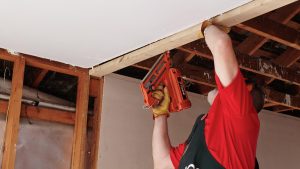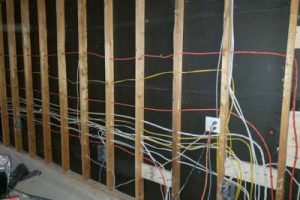How Far Apart Are Wall Studs in Australian Homes?
When it comes to home construction, understanding the spacing of wall studs is crucial for various reasons. Wall studs are the vertical framing members that support the structure of your walls and provide a solid anchor for attaching drywall or other wall coverings. In Australia, as in many other parts of the world, wall studs are typically spaced at specific intervals to ensure the structural integrity of the building. In this article, we will explore the standard practices for wall stud spacing in Australian homes, including common measurements and variations. How far apart are wall studs in Australian homes?
Standard Wall Stud Spacing in Australia
In Australia, the standard spacing for wall studs in residential construction is typically 450mm (centimeters) apart, which is equivalent to approximately 18 inches. This measurement is considered the “center-to-center” spacing, meaning the distance between the centers of two adjacent studs. This practice has been widely adopted in the construction industry for several reasons:
Structural Integrity: A 450mm stud spacing provides adequate structural support for the walls and ensures that they can withstand various loads and stresses over time.
Cost Efficiency: This spacing allows for the efficient use of building materials, reducing construction costs without compromising structural stability.
Ease of Installation: The 450mm spacing aligns with standard sheet sizes of building materials, such as plasterboard, which simplifies installation.
Energy Efficiency: It allows for the installation of insulation materials between the studs, helping to improve the energy efficiency of the home.

Variations in Wall Stud Spacing
While 450mm is the most common stud spacing in Australian homes, there are some variations and exceptions to this standard:
Load-Bearing Walls: In areas where walls bear heavy loads, such as load-bearing walls that support multiple floors or roof loads, you may find closer stud spacing. In such cases, the spacing may be reduced to 400mm or even 300mm to provide extra support.
Non-Load-Bearing Walls: Some non-load-bearing interior walls, like partition walls, may have wider stud spacing, such as 600mm. This is because these walls don’t bear significant structural loads, and wider spacing can save materials and costs.
Timber vs. Steel Framing: The material used for framing can also impact stud spacing. Steel stud framing often has narrower spacing than timber framing due to its increased strength. Spacing for steel studs can range from 300mm to 600mm, depending on the application.
Architectural Design: Occasionally, architectural design considerations may lead to variations in stud spacing. Unique wall shapes, curves, or design features may require custom stud spacing to accommodate the design.
Local Building Codes: Local building codes and regulations can influence stud spacing. It’s essential to check with your local authorities and adhere to any specific requirements in your area.

Why Stud Spacing Matters
Understanding the importance of wall stud spacing is crucial for homeowners, builders, and contractors alike. Proper stud spacing ensures the structural integrity of your home and affects various aspects, including:
Wall Strength: Adequate spacing provides the necessary support for walls, preventing sagging or bowing over time. Find more information about wall studs here.
Attachment Points: Studs serve as attachment points for fixtures, cabinets, and wall-mounted objects. Correct spacing ensures these attachments are secure.
Insulation: Proper stud spacing allows for the installation of insulation, which helps regulate temperature and reduce energy consumption.
Drywall Installation: Standard stud spacing ensures that drywall sheets can be easily attached to the wall without excessive cutting or waste.
Soundproofing: Stud spacing can impact the sound insulation of your walls, affecting the noise transfer between rooms.
In conclusion, wall stud spacing in Australian homes typically adheres to a standard of 450mm center-to-center. However, variations exist based on factors such as structural requirements, materials used, design considerations, and local building codes. Understanding the importance of proper stud spacing is essential for both the structural integrity and functionality of your home. Whether you’re building or renovating, consulting with a qualified builder or contractor can help ensure that your wall stud spacing meets the necessary requirements for your specific project.

